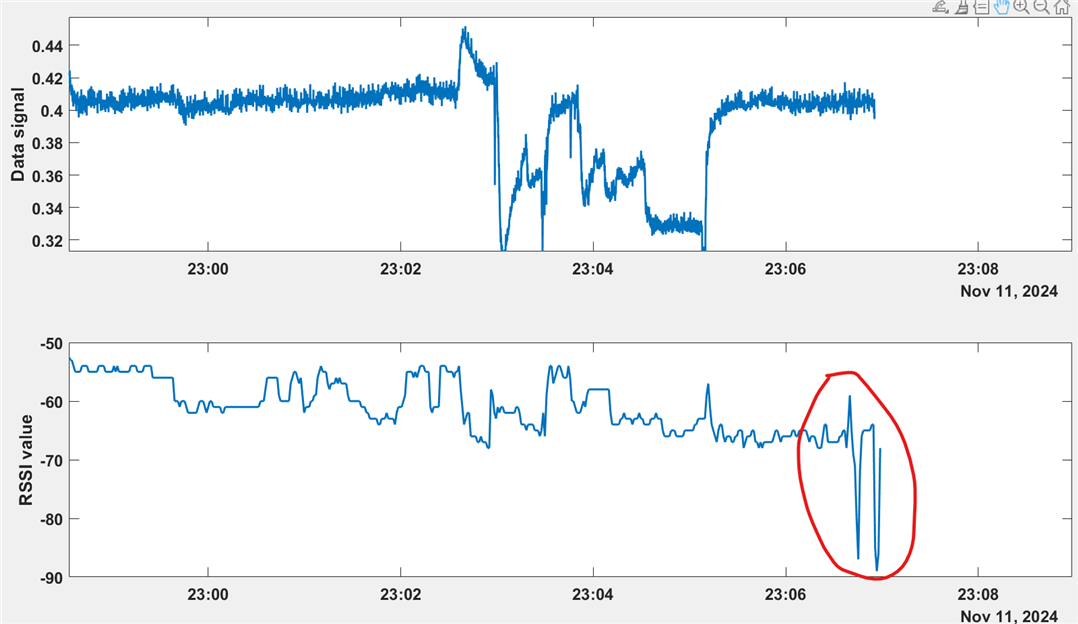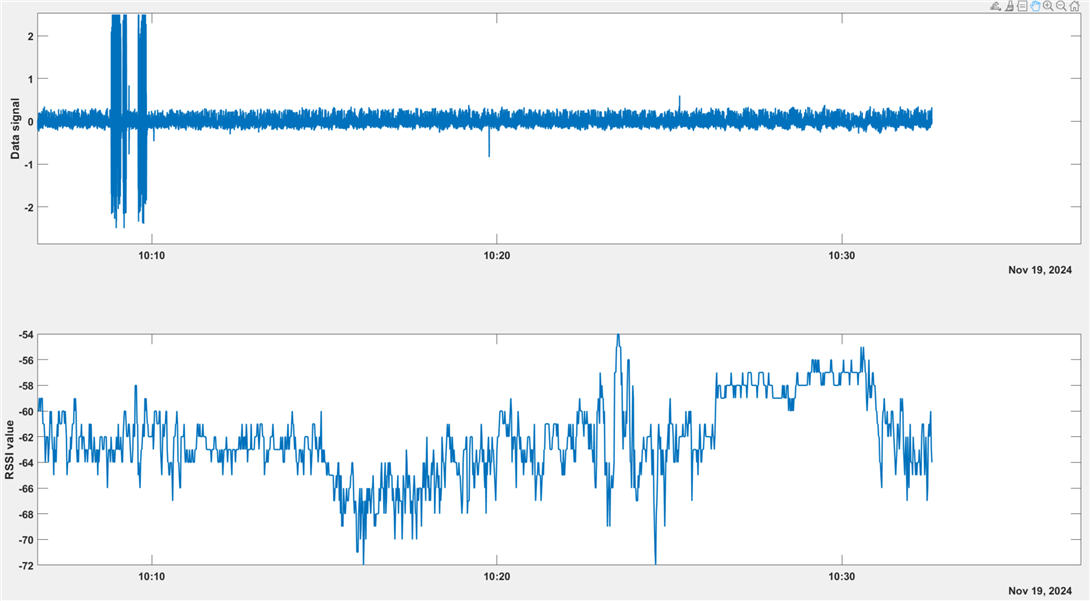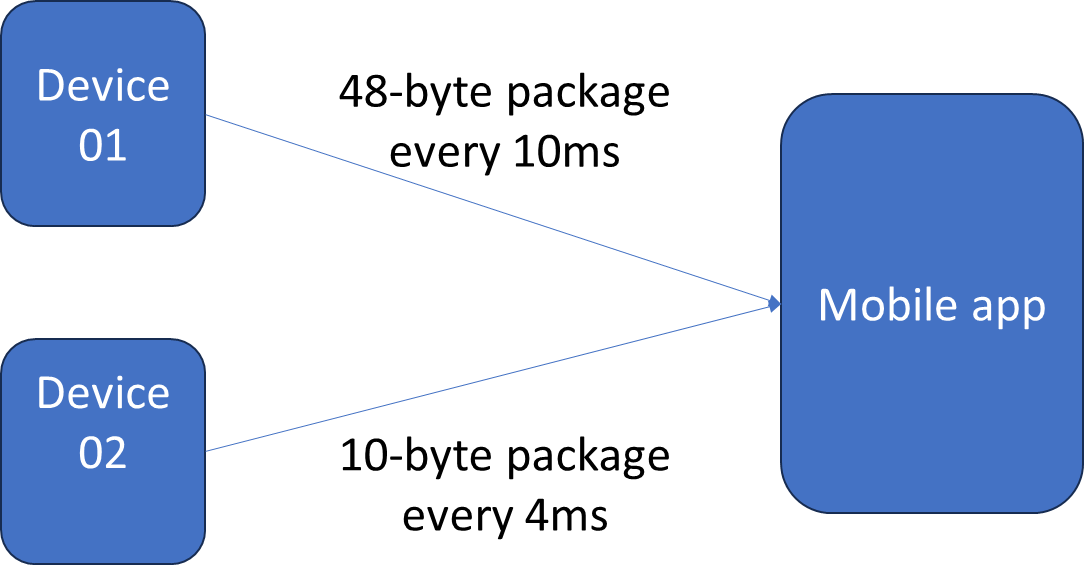Hi everyone,
We have devices using the BLE module (nRF52) deployed in clinics for testing. They have been functioning without issues until recently when we noticed occasional BLE disconnections. The following image shows data from one of the affected devices. Its RSSI value dropped significantly to -90 dBm, indicating weak BLE signal strength that could explain the disconnect. However, the device was positioned close to a tablet running the application connected to it, where the BLE signal strength should have remained strong. This inconsistency is what we find puzzling.

In another case, the RSSI value was within acceptable range (-68dBm), which couldn't lead to the BLE disconnection.

We're thinking of if any issue with code optimization. Any suggestions to further investigate this issue would be greatly appreciated. Thanks!




